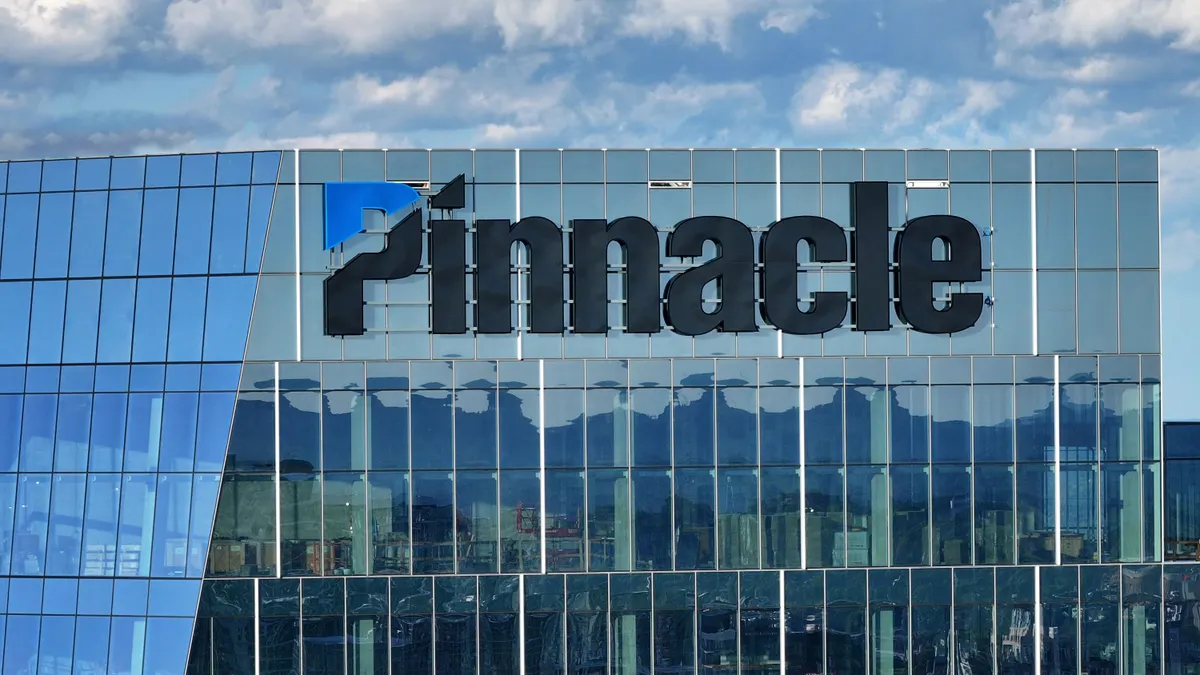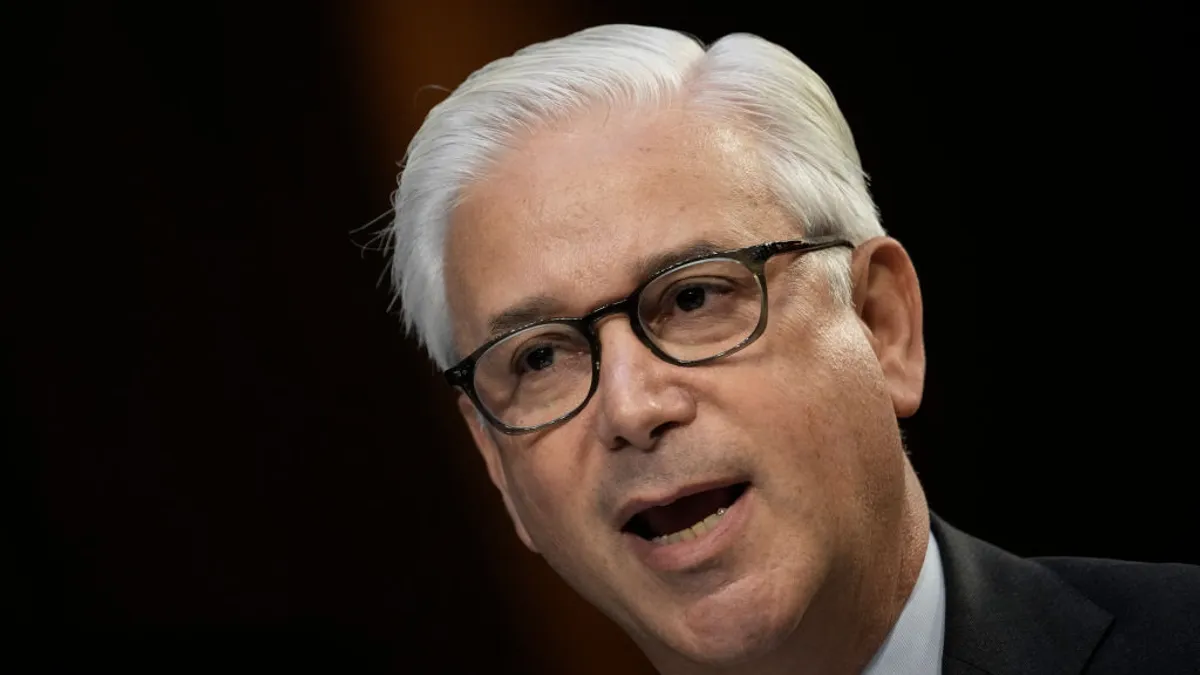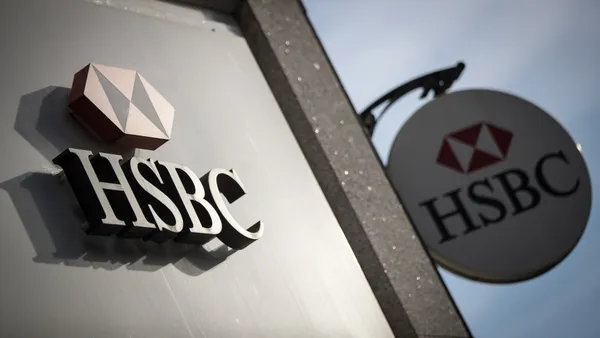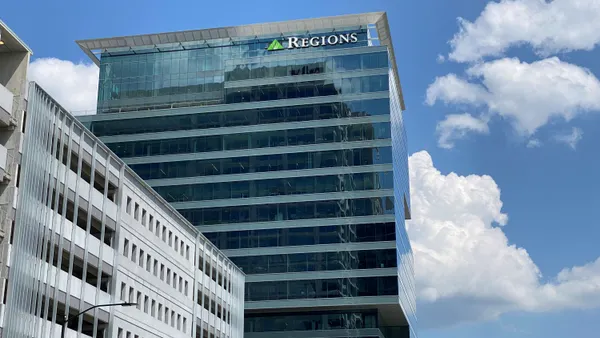Dive Brief:
- Bank of America is counting on investments in its payments capabilities, credit card features and market expansion to drive growth in its consumer segment, the second-largest U.S. lender said Wednesday.
- During the bank’s investor day in Boston, executives laid out a number of targets for expansion of the overall business, promising to exercise expense discipline while investing for growth. Investors have pressed for faster growth, and the Charlotte, North Carolina-based bank aims to deliver, CEO Brian Moynihan said. “We have to grow, no excuses,” he said.
- As the bank has sought to incorporate artificial intelligence and technology into its operations to a greater extent, headcount in Bank of America’s consumer segment has dropped by nearly half over the past 15 years – from 101,000 in 2011 to 55,000 today, according to an investor day presentation. At the same time, client experience metrics have risen, from 69% to 89%. The bank seeks to trim that headcount further while bolstering customer experience scores, said Holly O’Neill, president of consumer, retail and preferred banking.
Dive Insight:
Bank of America’s consumer segment includes retail, preferred and small-business banking, and counted about $947 billion in deposits as of the third quarter, up 34% since 2019.
The bank aims to increase its consumer client count to 75 million, from the current 69 million, over the next three to five years, which BofA dubbed the medium term.
Bank of America’s size and scale in the U.S. – which accounts for about 80% of the bank’s revenue by region – “took years to develop,” and “is a competitive advantage that no one has,” Moynihan asserted during his opening remarks at the bank’s investor day – its first since 2011.
Executives repeatedly noted the bank’s strategy is centered on holding a client’s core operating account, and consumer business profitability is driven by preferred customers, which are mass-affluent clients.
O’Neill said growth will be driven by investments, including in the bank’s “high-tech, high-touch” delivery; deposit, lending and investment services and products; technology and AI; brand and marketing; and the bank’s loyalty program.
BofA also sees consumer growth opportunities with family banking, student banking and employee banking and investing programs, O’Neill indicated. Since launching a year ago, family banking now has about 120,000 accounts, she said. The lender is targeting 1 million in the medium term, “positioning family banking as a foundational growth engine,” O’Neill added.
“This is not a story of complacency,” O’Neill said. “Our future growth is not reliant on size and scale alone. It's driven by intentional strategies, continuous investments and how we bring our business to life in our local markets.”
One of those areas of investment is payments, she noted.
“Our leadership and innovation in payments is critical to account growth and retention,” she said, pointing to peer-to-peer payments platform Zelle, digital wallet Paze and bill pay capabilities developed to make payments easier. “To maintain and continue to drive that relationship primacy, we have to be the best at payments.”
Today, about 96% of consumer payments are made digitally – up from 87% a decade ago. Looking ahead, “there is more work to be done to stay at the top of our game, with features and capabilities, digital wallet integration and driving adoption with our clients,” O’Neill said.
Another is BofA’s consumer credit card business, a $101 billion portfolio with 39 million cards. It’s a business where the bank “has size but has underperformed top peers,” UBS analyst Erika Najarian said in a Monday note.
About 71% of BofA checking clients have a credit card with the bank, and the lender aims to push that to 80% in the medium term, alongside growing loans at an average annual rate of about 5%, O’Neill said.
To hit those targets, the bank plans to strengthen relationships with co-brand partners, expand marketing efforts and invest in digital and product innovation, O’Neill said.
“A major enhancement on the horizon for us is the custom pay plan, which comes later this year, enabling post-purchase installment options, a feature designed to attract and to retain clients, especially Gen Z,” she said.
The bank has sought to refresh and expand its branch presence in several markets across the U.S. Birmingham and Huntsville, Alabama; New Orleans; Dayton, Ohio; and Madison and Milwaukee, Wisconsin, rank among planned expansion markets through 2028, O’Neill said.
The lender, which has 213,000 total employees, has spent about $100 billion on technology over the past decade, Moynihan said. Annually, about $4 billion is spent on new tech initiatives, and $1 billion on cybersecurity. BofA has added about 4,300 technologists since 2018.
“New technologies will allow us to continue to drive investment in the business while running an efficient platform,” Moynihan said.
Erica, the bank’s AI-powered virtual assistant, now logs 2 million interactions a day. “To give you a sense of the impact here, those 2 million daily interactions is the equivalent of the work of about 11,000 people,” O’Neill said.
Bank of America also issued a new medium-term target for return on tangible common equity of 16% to 18%, up from the roughly 15% the company is generating today. The bank said it expects to achieve that through new business growth, operating leverage and capital deployment.
Executives in the bank’s corporate and investment banking, commercial banking, business banking, wealth and investment management, and global markets units also laid out their strategies Wednesday.














